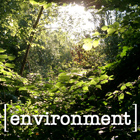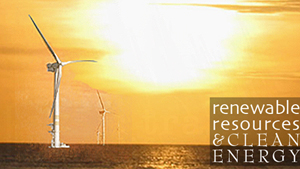
|
CONSERVATIONISTS COMPLAIN WIND TURBINES CAN HARM THE ENVIRONMENT, BUT THERE ARE SOLUTIONS TO PREVENT IT 11 July 2006 Opponents of wind-harvested power generation —usually lobbying for subsidies or public support for fossil fuels purveyors, but also including conservationists— like to crow that giant turbines kill birds, destroy pristine habitat and even "emit" carbon dioxide (CO2) indirectly. The gist: that an "environmentally friendly" power source is in point of fact not so environmentally friendly. But the details show that story to be murky at best. The major obstacle to wind (aeolic) power achieving its universally accepted purpose —to power a 21st century economy without the contaminant effects of carbon emissions, in an effort to curb or halt human-induced climate change— is the location of major wind farms. The massive complexes can by their size and construction distrupt fragile ecosystems. This is not unique to wind farms; it is true of any industrial-scale construction project that comes into contact with vulnerable species, habitats and water systems. In Europe, the disruption of peat bog ecosystems is especially worrying, because while attractively remote, windy and unpopulated, peat bogs vitally help to keep water clean and store huge amounts of carbon dioxide, a major contributor to the greenhouse effect, one component of the global warming trend. Displacing or destabilizing even a modest section of a peat bog in order to build on it can affect an area anywhere from 50 to 250 meters in radius from the build site. The effects can be habitat destruction, or even "bogalanche" —a massive landslide of bog soil, as in the case of Ireland's Derrybrien wind complex, an event under investigation by the European Commission for possible criminal negligence—, but can also include irregular disruption of terrain cohesion, causing the release of large amounts of fixed CO2 into the atmosphere. This can greatly extend the length of time required for a given turbine to cover its carbon debt —the amount of CO2 emitted in connection with its construction and installation. To reduce the carbon debt of renewable energy technologies, it is necessary to carry out exhaustive studies of ecological impact, going beyond the already contentious issue of "spoiled" vistas and industrial production. The global wind-generation resource has been estimated at 72 terawatts, 40 times the entire global demand for 2000. Eliminating peat bogs and other highly vulnerable ecosystems from that resource potential will cut into the global capacity, but at 40 times demand, or 20 times or even at 10 times, there is clearly room to work with. A less pressing issue, but one which has some conservationists concerned, is the possible resulting dessication of terrain in the windshed of tightly laid out major aeolic complexes. The evidence is not conclusive to demontrate a causal effect in such circumstances, but the threat can be reduced or avoided by planting the turbines' foundations at wider intervals, allowing the overall wind pattern to more closely retain its natural routes. If standard requirements for environmental impact projections are followed, then vulnerable peat bogs should be spared wind farm development and the carbon debt of wind energy as a resource can be greatly reduced. Similar research needs to be done for the real ecological impact of offshore turbine installations. And, while major industrial installations are attractive to governments and energy suppliers, it may not be the most efficient method for developing the industry or the economies of scale preferred for major power-generation. An atomized, optimized system of individually-owned power-generation wind turbines connected to the wider electricity grid might be more efficient, more sustainable and less ecologically risky, limiting the need for massive foundations and sky-scraping towers and gathering funding from new sources of private investment. The criticism that birds are imperiled by the huge rotating blades of today's wind turbines stems from the numbers of large birds of prey who have died at selected sites where they were unable to avoid the sweep of the blades. Ecological impact assessments should also take into account factors such as migratory patterns for vulnerable species and the territorial range and hunging habits of large birds of prey like eagles, hawks and vultures. Avian population shifts in wind farm areas appear to be tied more closely to birds moving away from the developed sites than to deaths specifically, but much evidence is not currently available, as it is often the same company running the site that keeps the figures needed to do adequate statistical research. Conservationists argue that information is being withheld and that new standards for open reporting and oversight are required. More detailed and regular reporting on vulnerable birds' habitat, migration and population, would permit better site planning, which could minimize the risk of birds colliding with the rotating turbine blades. Again here, the placement of smaller individual turbines on or near private homes and small businesses could greatly reduce the need for larger numbers of these ever larger industrial wind farm sites. It would reduce the risk to birds, but also would significantly reduce the time to carbon-neutral status for the individual unit. This could potentially lead to returns on investment at an earlier date and the expansion of availability of inexpensive renewable energy throughout the marketplace. [s]
|
|||||||||||||||||||||
|
||||||||||||||||||||||







